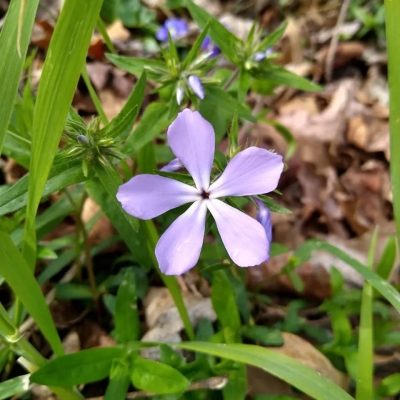 Tips from the Experts at The State Arboretum of Virginia
Tips from the Experts at The State Arboretum of Virginia
Virginia native wildflowers and grasses are a great option to enhance the beauty of gardens and landscapes while simultaneously creating much-needed habitat for a wide variety of insects, birds, and other animals who form the backbone of all our local ecosystems. They are also beautiful, living examples of Virginia’s natural history.
Starting native plants from seed can be more challenging than common vegetables or ornamentals. These tips from the curators of The State Arboretum of Virginia will help ensure success when starting your own native seeds.
Cold Stratification
According to Jack Monsted, Assistant Curator of the arboretum’s Native Plant Trail, many natives, particularly perennial wildflowers, require a period of ‘cold stratification’ to germinate.
“This is a fancy way to say they need to be kept cold and moist for several weeks or months before they’ll do anything,” said Monsted. “In the wild this requirement prevents them from sprouting in the middle of winter and freezing to death. But that means that an extra step is needed before sowing in the garden.”
Studies have shown that different species require different stratification periods ranging from two weeks to several months. Many native seed labels will say exactly how long to stratify each species, but if no information is given, generally around 30 days is good rule of thumb, according to Monsted.
There are three common methods to cold stratify seeds. For all three methods, the key is keeping them moist enough to break dormancy, but not so moist that they mold.
Method 1: Sow Outside in Winter – This is the easiest method, and simply allows seeds to go through a natural stratification process by being in soil outside during winter. If you sow the seeds outdoors in January to early March, they’ll have enough time to cold stratify before germinating in spring. If you’re worried about squirrels or chipmunks digging them up before they germinate, you can sow them outside in a pot and cover with chicken wire or another barrier, ensuring that rainwater is still able to pass through the barrier.
Method 2: Wrap in Paper towels – If you have just a few seeds, this method is ideal. Simply wet a paper towel and squeeze out the excess moisture. Then place your seeds in a single layer on the paper towel, fold it over so the seeds won’t fall out, place it in a plastic bag, and put the whole thing in your refrigerator. Check on the seeds weekly to make sure they haven’t completely dried out.
Method 3: Bag Seeds With Clean Play Sand – For this method, simply get some clean play sand and slowly add water until it is moist enough to be made into a ball. If you squeeze the ball of sand and water runs out, it’s too wet and more sand must be added. Once the sand is appropriately wet, mix about two parts sand per one part seed and put in a plastic bag. Shake thoroughly and place in your refrigerator, checking on them periodically to make sure they don’t dry out.
 Roots Before Shoots
Roots Before Shoots
Most native plants – particularly those that thrive in full sun – are adapted to survive droughts and other dry times, so they put a lot of effort into building deep root systems. For this reason, it’s recommended to use extra deep trays or pots if not starting plants directly in the ground.
“At the arboretum we start our native perennials in 5-inch-deep cells, which gives the roots plenty of space to grow and allows us to transplant them without damaging the root system,” said Monsted.
Hold Off on the Fertilizer
Native plants are adapted to thrive in natural soils, many of which are very nutrient-poor compared to your average garden soil. For this reason, it is highly recommended that you never use any synthetic fertilizer on native plants or seeds. They can’t utilize the extra nutrients as well as weeds can, and too much fertilizer can damage them.
“If you want to amend the soil, the best thing to do is add a little clean leaf mulch to the surface of the soil and avoid digging or tilling the soil as much as possible,” Monsted said. “This will gradually increase organic matter in your soil and produce a healthier soil ecosystem overall.”
Right Plant, Right Place
When you do finally put your plants in their final home, make sure to match the plant to the site conditions. While native plants are well adapted to our climate, each one still has definite preferences for how much sunlight and water they need. Shade-loving woodland phlox will wilt in the summer if planted in full sun, and the drought-tolerant orange Butterfly Weed will rot if planted in constantly wet soil. Make sure to research the light, moisture, and soil requirements of your plants and put them in locations that match those conditions.
Get Inspired
For inspiration to incorporate native plants in your landscape, visit the State Arboretum of Virginia. Completed in 1998, the Native Plant Trail was built to showcase the beauty and diversity of Virginia’s native plants and features hundreds of wildflowers, grasses and trees. The trail also serves to educate visitors about our native plants – from their importance in our local ecosystems to identification tips and the benefits they offer humans. Interpretive signage and seasonal interactive exhibits appear throughout the trail to help visitors find a deeper connection to the flora and landscapes of Virginia.
